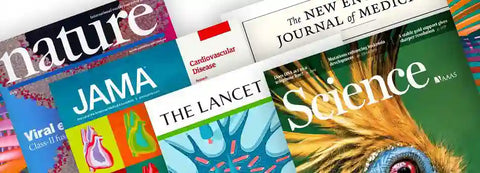一些難懂的詞語以及如何有效地使用它們
英語並不是一種容易掌握的語言。當它不是你的母語時,說它肯定會很有挑戰性,而寫它可能就像一場噩夢,即使對於母語人士來說也是如此,尤其是當寫作涉及創建成熟的學術散文,以引人入勝的方式討論複雜的想法時。學術和科學寫作必須達到正式英語的最高標準,避免所有語法和句法錯誤,以便成功傳達複雜的數據和複雜的想法。然而,即使理解了基本知識,並且可以無錯誤地構造大多數句子,英語中仍然有一些難以正確使用的麻煩詞,這些詞可能會破壞即使是最認真的作家的最大努力。這些字詞包括“Both”、“each”、“either”、“neither”、“nor”和“only”,因此一些關於它們的使用技巧可能會有所幫助。
「Both」代表複數概念,總是指兩件事物,而不是一件或三件或更多。因此,它採用複數動詞,如以下兩個例子所示:「文章中既包含表格又包含圖形」和「它們都有助於理解作者的意思」。
「each」 用於單選兩個或更多事物中的一個,因此與「both」不同,它是一個單數概念,需要使用單數動詞。因此,「這三個圖形各自展示了不同的東西」是正確的,而「它們每一個都是彩色的」是不正確的,應該讀作「它們每一個都是彩色的」。
雖然“either”和“neither”通常用於談論兩件事,但它們也是單數概念,因此應該與單數動詞一起出現。這意味著「部落格文章中包含表格或圖形」和「兩者都沒有特別的幫助」都是正確的。 '都不是。 。 。 nor’ 結構也需要單數動詞,因此 'neither the table nor the figure was helpful' 是正確的,並且記住在 'neither' 中不應該用 'or' 代替 'nor'。 。 。也不是'建設。
「Neither」、「either」和「both」在句子中的位置必須經過仔細考慮,以實現平衡和含義清晰,同時避免重複,因此正確的措辭應該是「細節既不影響他也不影響她」。如果您使用“這些細節既不影響他也不影響她”,那麼正確的措辭實際上是“這些細節既不影響他也不影響她”,這既不必要又尷尬。如果在類似情況下使用“both”,正確的措辭應該是“細節影響他和她”,而不是“細節影響他和她”。同樣,第二個版本的正確性將需要重複使用“影響”,因此,只有當你寫一些稍有不同的內容時,這種構造才是正確的選擇,例如“細節既影響他,又嚇壞她”。
「Only」 可以放在句子中聽起來最合適的位置,除非存在歧義或混淆的可能性,在這種情況下,應仔細放置以澄清含義。例如,“只在星期五洗衣服”可能意味著“只在星期五洗衣服”或“只在星期五洗衣服”,甚至可能意味著“星期五洗衣服,但不烘乾衣服”。因此,明智的做法是,在寫作時考慮所有的位置和語義選項,並選擇最能表達您的意圖的選項。
為什麼選擇我們的編輯和校對服務?
在 Proof-Reading-Service.com,我們透過龐大且極其敬業的學術和科學專業團隊提供最高品質的期刊文章編輯、論文校對和線上校對服務。我們所有的校對人員都是英語母語人士,擁有研究生學位,他們的專業領域涵蓋了廣泛的學科,因此我們能夠幫助我們的國際客戶進行研究編輯,以改進和完善各種學術手稿,從而成功出版。我們的稿件編輯和校對團隊中許多經過精心培訓的成員主要負責擬在學術期刊上發表的文章,運用嚴格的期刊編輯標準,確保每篇論文中使用的參考文獻和格式符合期刊對作者的指示,並糾正任何語法、拼寫、標點或簡單的打字錯誤。透過這種方式,我們使客戶能夠以清晰準確的方式報告他們的研究,以打動收購校對員並實現出版。
我們為各種科學期刊論文的作者提供的科學校對服務尤其受歡迎,但我們也提供手稿校對服務,並擁有校對和編輯所有學術學科以及其他學科手稿的經驗和專業知識。我們的團隊成員專門從事醫學校對服務,我們的一些專家專門致力於論文校對和手稿校對,透過最嚴格的博士論文編輯和期刊文章校對實踐,為學者提供提高格式和語言使用能力的機會。無論您是在準備會議論文以供展示,完善進度報告以供與同事分享,還是面臨編輯和完善任何類型學術文獻以供出版的艱鉅任務,我們專業團隊的合格成員都可以提供寶貴的幫助,讓您對您的書面作品更有信心。
如果您正在為學術或科學期刊準備一篇文章,或者計劃在不久的將來實現這一目標,那麼您可能會對一本新書《期刊出版指南》感興趣,該書可在我們的「期刊發表研究成果的技巧和建議」網站上找到。








